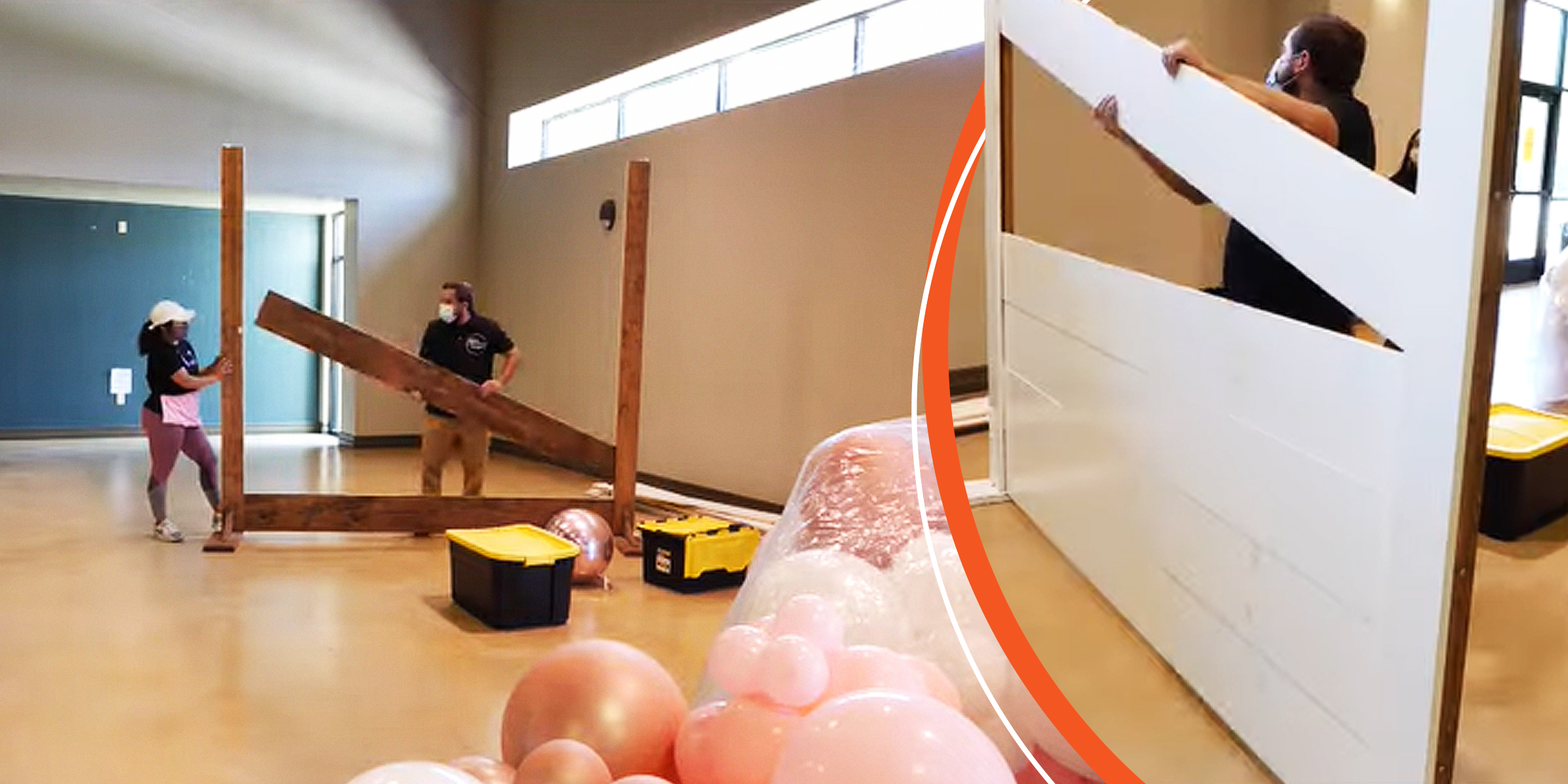
DIY Wood Backdrop — A Helpful Guide to Crafting the Perfect Wooden Backdrop

Transform any space into a personalized creative haven with a DIY wood backdrop. Easy to customize and simple to make, this versatile piece allows you to add a unique touch to your photography, events, or home decor.
In the world of creative projects, a DIY wood backdrop stands out as a versatile and customizable piece that can transform any space.
Whether you’re a photographer looking for a rustic feel in your photos or a DIY enthusiast eager to enhance your home decor, a wooden backdrop can be tailored to any size, color, and type of wood.
Read on for a detailed guide on how to craft your own stunning wooden backdrop, bringing a blend of functionality and artistic flair to your surroundings.
DIY Wood Backdrop: Your Step-by-Step Crafting Guide
Materials Needed:
- Three cedar planks, each 1″ x 6″ x 8′, cut into 36″ lengths
- One pine plank, 1″ x 2″ x 8′, cut in half
- Optional wood stain to enhance the natural wood color
- Paint in your chosen color for the final finish
- Petroleum jelly for distressing techniques
- Screws suitable for wood
Tools Required:
- Power drill with assorted drill bits
- Paintbrush for even application of stain and paint
- Metal spatula or scraper for distressing
- Optional sandpaper (80-120 grit) for a smoother finish
- Cleaning materials such as paper towels or a rag
Crafting Your Backdrop: The Steps
Step One: Begin by sanding down your cedar planks to remove any rough edges, enhancing the texture and readying the surface for staining or painting.
Arrange the planks side by side with slight gaps to allow for aesthetic spacing. Position the pine stretchers across the planks near the edges to provide support and allow the backdrop to be used on both sides.
Step Two: Attach the stretchers to the cedar planks using wood screws. It’s crucial to drill pilot holes first to prevent the wood from splitting. For those using sheet metal screws, monitor the depth as they drill their own pilot holes and can penetrate too deeply if not careful.
Step Three: Choose whether to stain or paint your planks. Staining brings out the natural beauty of cedar, ideal for a backdrop with a warm, authentic tone. For painting, apply your chosen color over the pre-stained wood, aiming for a coverage that masks the wood grain, preparing it for the distressing stage.
Step Four: Apply petroleum jelly on sections of the wood where you would like a distressed effect, particularly along the edges and random streaks across the planks. This layer will prevent the paint from adhering completely, making it easier to scrape off in the next step.
Step Five: Paint over the entire backdrop, ensuring complete coverage. Avoid using a primer to make the distressing process effective. Apply two coats if necessary, allowing each coat to dry thoroughly.
Step Six: Once the paint has dried, use a metal spatula to scrape away areas where petroleum jelly was applied. This technique reveals the underlying stained wood, creating a beautifully aged look. Optionally, sand lightly to enhance the distressed appearance without removing too much paint.
Creating a DIY wood backdrop is more than just assembling wood and applying paint; it’s about crafting a piece that adds texture, color, and personality to your creative space. Each step in the process allows you to personalize the backdrop, ensuring it perfectly suits your aesthetic needs.
Now that you've mastered the art of making a wooden backdrop, why not continue exploring other DIY projects? Check out our next guide on DIY art display panels and transform your creative displays into works of art.